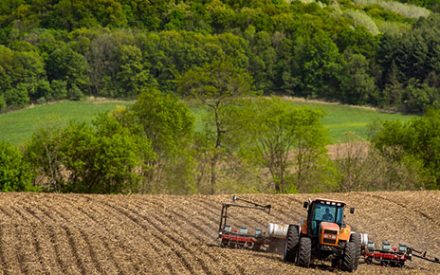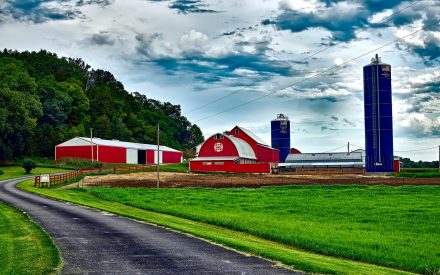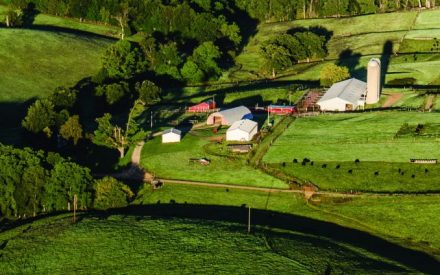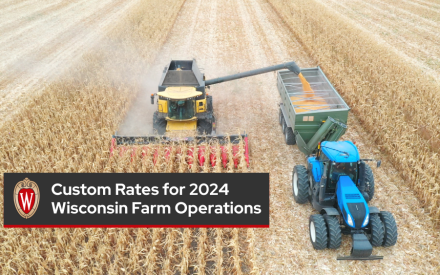This provides a summary of what is covered in the full-text publication, “Pasture Rental Arrangement for Your Farm” located in the AgLease 101 document library Aglease101.org – a publication to help operators and landowners develop equitable rental arrangements and assist them in making sound decisions based on an equitable evaluation of resources.
Details on how to determine the landowner and livestock owner contributions to livestock production to arrive at a pasture rental agreement are presented at AgLease101.org and includes a sample lease at the end of the full text. Additional information and resources for contract grazing are also listed below.
Stocking Rate
Stocking rate refers to the number of livestock per unit area. There are several ways of expressing stocking rates. The AgLease101 document can help determine how the stocking rate will be stated i.e. by “animal units” or number of animals or head (e.g. bull, cow, yearling, etc.) of livestock and weight of livestock to be grazed. Clearly specifying the stocking rate in the lease agreement helps avoid disagreements between both parties and maintains the quality of the grass stand. Setting pasture rent on a per-acre basis or a share of gain basis gives an incentive to the livestock owner to stock heavily which may not be in the interest of the owner. It is in the interest of both parties to develop a lease agreement that achieves maximum economic returns to all resources while maintaining the grass stand and quality.
Establishing Landowner and Livestock Owner Contributions
The landowner’s cost and livestock owner’s net return are two financial estimates used to establish pasture leases. The AgLease101 document Worksheets in the full text publication, will help you gather information necessary to compute various lease rates. Worksheet 1 will help calculate the landowner’s cost estimate and Worksheet 2 will help calculate the livestock owner’s net returns estimate. These budgets are helpful in insuring that all the costs of production are considered when entering into a lease.
Establishing Lease Rates
Pasture rental rates should reflect productivity. Lease negotiations may be influenced by market rates, the value of location, water and landowner services. Find the latest county cash rental rates for pasture at https://farms.extension.wisc.edu/article-topic/pricing-and-contracts/
Negotiating a pasture rental rate can take many forms. Establishing the cost estimates for both parties can help determine upper and lower bounds when negotiating rental rates. Eventually one or both parties will need to reduce their return on investment desired in order to come to an agreeable lease rate or walk away from the lease. AgLease101 provides details for additional ways of negotiation a pasture lease:
Share of Gain – divide the value of the livestock gain between the landowner and livestock owner based on their relative contributions. The AgLease101 Worksheet 3 uses estimates from Worksheets 1 and 2 to illustrate how to divide the value of livestock gain.
Variable Rates – May account for risk due to productivity or market price by shifting risk with variable rate agreements. The AgLease101 document provides basic formula examples of lease arrangements that would shift some of the risk.
The importance of putting the agreement in writing
The details of how the rent will be determined should be clearly specified in a written lease agreement. Including one or two examples with different prices and yields is helpful, as well. Advantages of a written agreement are:
- Encourages a detailed discussion of the agreement, leading to better understanding by both parties.
- Serves as a reminder of the items originally agreed upon.
- Provides a valuable guide for the heirs if either the operator or landowner dies.
Additional resources and information
Green Lands Blue Waters – The Midwest Perennial Forage Working Group’s mission is to facilitate an increase in land used for pasture and perennial forage production in the Upper Midwest, and to improve the environmental performance of farming systems, while maintaining agricultural production and profitability.
Find factsheets on contract grazing, land evaluation for grazing, lease agreements, rates charged and cover crops grazing: https://greenlandsbluewaters.org/midwest-perennial-forage-working-group/#contract-grazing
Pasture leases and considerations for corn stalks and cover crops
Part 2 of 5 of the Agriculture Leases Video Series
This video is part of a series that includes an example dialog between land/farm owner and renter as they negotiate the specific details of a lease agreement, highlighting important resources, tools and considerations to inform a resilient and robust agreement that serves both parties as well as discussing specific leasing topics.
▶ Watch: Leasing Buildings/Facilities
▶ Watch: Flexible vs. Cash Leases
▶ Watch: Small Acreage and Long-term Investments on Leased Land


 Fixed and Flexible Cash Rental Arrangements for Your Farm - AgLease 101 publication brief summary
Fixed and Flexible Cash Rental Arrangements for Your Farm - AgLease 101 publication brief summary Rental Agreements for Farm Buildings and Livestock Facilities - AgLease 101 publication brief summary
Rental Agreements for Farm Buildings and Livestock Facilities - AgLease 101 publication brief summary Crop Share Rental Arrangements for your Farm – AgLease 101 publication brief summary
Crop Share Rental Arrangements for your Farm – AgLease 101 publication brief summary Custom Rates for 2024 Wisconsin Farm Operations
Custom Rates for 2024 Wisconsin Farm Operations


